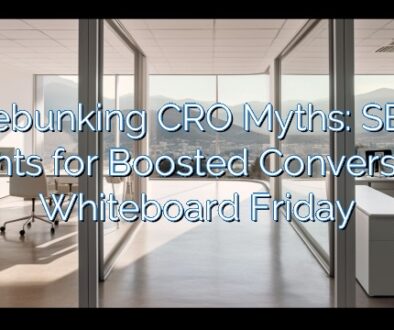23 Essential Content Metrics Used by Top Marketers Revealed
The Essential Metrics for Content Marketing Success: A Nuconet.com Guide
For small and medium business owners, digital marketing can often feel like sailing in uncharted waters. With waves of data and a sea of metrics, it’s understandable if you find yourself lost. But, fear not! I’m here to guide you through the maze of content marketing metrics, showing you which are the navigation stars to follow. By the end of our journey, you’ll be equipped to harness these insights to sail your business to the lands of growth and prosperity.
1. The Cornerstone of Content Strategy: Publishing Frequency and Timeliness
Have you noticed that great content, just like a well-oiled machine, requires rhythm and reliability? Publishing frequency and meeting deadlines represent the beat and tempo of your content marketing strategy. Imagine if your favorite TV show aired at unpredictable times. You’d soon lose interest, wouldn’t you? Consistently delivering compelling content keeps your audience engaged and builds a loyal following. What’s more, the more consistent you are, the more search engines and followers alike learn to anticipate and look forward to your content.
1.1. Why Publishing Frequency Matters
Think of publishing frequency as the heartbeat of your digital presence. The steady pulse of articles, videos, and posts not only nurtures current customer relationships but also incrementally expands your reach. The compound effect this has over time is undeniable. Each new piece of content is a beacon, drawing new eyes to your brand and establishing your place in the digital market.
1.2. The Significance of Meeting Deadlines
Deadlines are not just dates; they’re commitments to your audience. They’re a reflection of your brand’s reliability and have a direct impact on client satisfaction and retention. Especially for digital marketing agencies, meeting deadlines is a barometer of operational efficiency and a promise of quality service delivery.
2. Driving Visibility Through Organic Search Metrics
Visibility is currency in the digital realm. The more your content appears in search results, the richer the traffic to your brand’s online doorstep. Metrics such as impressions, rankings, organic keyword growth, and rate of keyword acquisition are like signposts, indicating how well your content is performing and where it’s leading your business.
2.1. Impressions and Rankings: Your Online Footprint
Impressions measure the number of times your content appears in search. But the goal isn’t just to be seen—it’s to be discovered and explored. That’s where rankings come in. Securing a spot on the first page of Google is like setting up shop on Main Street. It’s prime real estate for organic traffic, inviting the world to see what you have to offer.
2.2. Organic Growth: Planting Seeds for Future Harvest
Tracking the growth of keywords your content ranks for is akin to nurturing a digital garden. By planting a diverse array of seeds (keywords), you’re increasing the chances of a richer, more bountiful harvest (traffic and leads). Seeing which keywords sprout quickly gives insight into fertile grounds and opportunities for optimization.
3. Backlinks: The Digital Net Worth of Your Content
Backlinks are a powerful testament to the value of your content. They act like digital nods of approval, bolstering your site’s authority. Quality trumps quantity here, as a few well-placed links can be worth more than a multitude of weak ones. It’s the difference between being recommended by a niche expert versus a passing mention in a crowded forum.
3.1. The Rarity of Quality Backlinks
Navigating the waters of link building can be treacherous. However, earning high-quality backlinks is a sign of remarkable content that others trust and vouch for, which can significantly lift your site’s prominence in the sea of online information.
4. Leads: The Beacon for Revenue Generation
Content that doesn’t convert is like a ship with no destination. Leads are the guiding stars that show you’re on the right course. From Marketing Qualified Leads (MQLs) to Sales Qualified Leads (SQLs), each level of engagement brings your audience closer to your offer—and your business closer to revenue.
4.1. Understanding the Value of High Intent Leads (HILs)
While MQLs and SQLs are valuable waypoints, don’t overlook the treasure of HILs. These prospects match your ideal customer profile and demonstrate a keen interest in your offerings. They’re not merely passing ships in the night; they’re potential crew members waiting to join your voyage.
5. Traffic and Audience Growth: Charting the Course for Expansion
Traffic isn’t just about numbers; it’s the wind in your sails, propelling your brand forward. But take note, not all winds are helpful. The aim is to harness those that lead to meaningful engagement and purposeful visits to your site. Audience growth, especially within newsletters and social platforms, signals healthy interest and demand for your content. It’s the current that naturally expands your brand’s horizons.
5.1. Striving for Organic Reach and Sustainable Growth
Measuring organic traffic from trusted sources like Google Search Console provides a clear picture of your content’s performance. A steady increase means you’re on course. Factor in SEO tools like Ahrefs, and you have a compass pointing toward ever-greater opportunities for reach and engagement.
6. Engagement: The Heart-to-Heart with Your Audience
Engagement is the personal touch in your digital relationship. Metrics such as likes, comments, email list interactions, and time on page reveal how deeply your content resonates with your audience. It’s the proof that your message isn’t just heard but felt and valued.
6.1. The Nuances of Content Engagement
An engaged audience is not a passive one. They’re the active participants in the narrative you’re weaving. They like, they comment, they share. These signals confirm that your content has not just grabbed attention but sustained it, enriching the relationship with your brand.
7. Conversion: The Ultimate Compass for Content Impact
In the end, the true North of content marketing is conversion. It’s the visible path from content to customer—a journey that, when navigated skillfully, leads to greater business growth and revenue. Conversion metrics give you insight into what’s working and what’s not, allowing you to refine your strategy for maximum effectiveness.
7.1. Revenue Correlation and Conversion Growth
Mapping traffic and sign-up data against revenue helps decode the pattern of customer acquisition. It’s a marriage of creativity and analytics that shapes a more informed and deliberate approach to your content marketing voyage.
Conclusion: Your Voyage Towards Digital Marketing Success
In the ocean of digital marketing, content is your ship and metrics are your compass. Knowing which to use and how to interpret them is as vital as knowing the seas you navigate. As you optimize your content strategy with these insights, remember that at Nuconet.com, our expertise is your guiding star. Are you ready to chart a course toward digital marketing excellence? Book your 15-minute consultation with Alex Casteleiro today and together let’s discover the vast potential of your business’s digital journey!
FAQs About Content Marketing Metrics
Q1: How often should we publish new content for optimal engagement?
A1: The optimal publishing frequency depends on your resources and audience’s appetite. Consistency is key, so choose a schedule you can maintain and that keeps your audience looking forward to your content.
Q2: How do backlinks affect my website’s SEO?
A2: High-quality backlinks from reputable sites signal to search engines that your content is valuable and trustworthy, boosting your site’s authority and improving search rankings.
Q3: What is a good conversion rate for my content?
A3: A good conversion rate varies by industry and content type. The focus should be on continuous improvement by understanding your analytics and optimizing for your audience’s response.
Q4: How can I track the engagement of my content?
A4: Engagement can be tracked through various metrics like likes, comments, shares, email open rates, time spent on page, and scroll depth. Tools like Google Analytics can provide insights into these behaviors.
Q5: Do I need to measure every metric mentioned?
A5: Not every metric will be relevant to your strategy. Choose those that align with your goals and provide actionable insights to improve your content marketing efforts.
[ad_2]
Inspiration Source link




